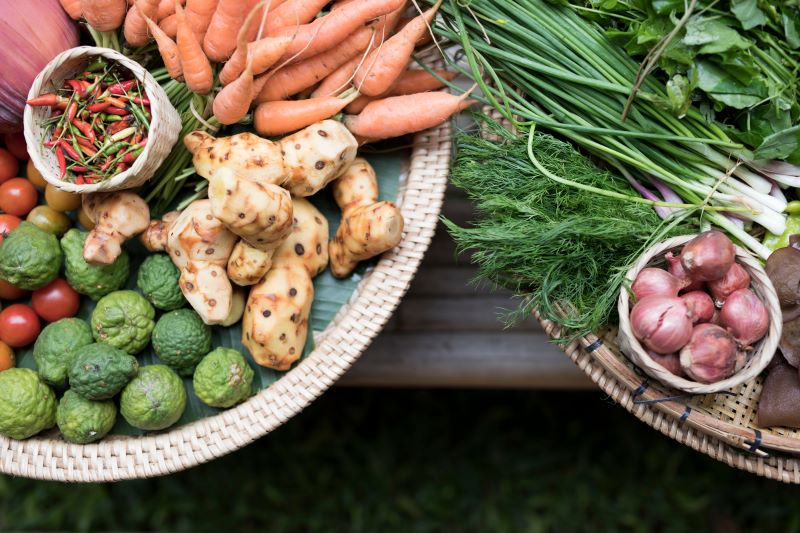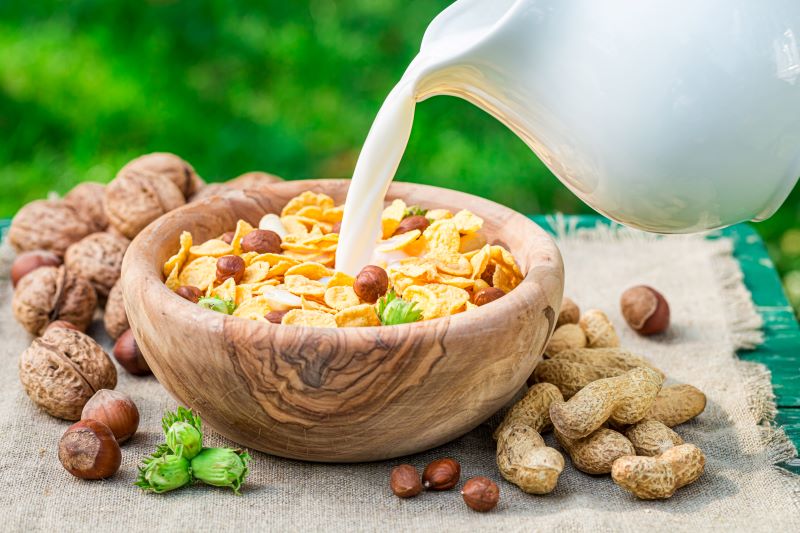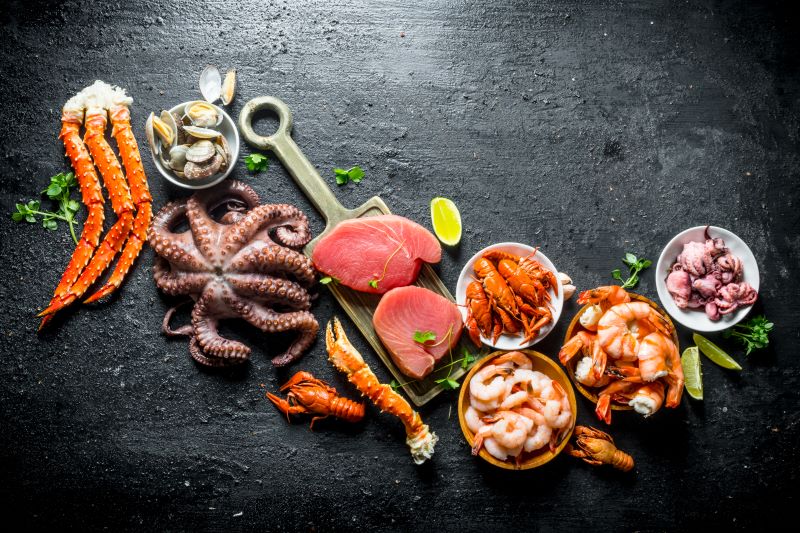65 Copper Rich Foods, Fruits & Vegetables to Include in Your Diet

Copper, an essential micromineral, is involved in numerous physiological processes in the body. It is vital for good health because it helps make red blood cells and supports the immune system, among other things.
Incorporating copper-rich foods into your daily diet is a simple way to ensure adequate intake and promote optimal health and well-being. The article highlights the importance of copper, its sources, and why one should consider adding vegetables to his/her meal.

Table of Contents

What is Copper?
Although the body requires only a small amount of it, copper is still a very important trace mineral. For example, it acts as a cofactor to several enzymes involved in energy production, connective tissue formation, and synthesising neurotransmitters. Besides this, copper also plays a role in iron absorption and utilisation, another crucial nutrient. Thus, despite being required in minute amounts, copper helps maintain a general state of wellness.
What are the Sources of Copper?
There are several dietary sources of copper, including Animal-based and plant-based foods. Some of the best sources include nuts/seeds/whole grains/ shellfish/ organ meats, and some fruits or vegetables.
It is important to consume a variety of foods that are rich in copper so that the body receives a sufficient amount of this essential mineral. Those consuming animal products, poultry, beef, and lamb are great sources of this micronutrient. For those who don’t, certain fruits and vegetables like spinach, kale, and avocados are excellent sources.
Incorporating these foods ensures adequate intake of copper, which is responsible for various bodily functions.
Top 65 Food Items High in Copper
Foods rich in copper are necessary for maintaining good health and helping the body function properly. Such vital functions include energy production and immune system support. Among the primary sources of this element are shellfish (e.g., oysters, crab), organ meats like liver, nuts including cashews or almonds; seeds such as sesame seeds and pumpkin seeds also contain high levels of copper.
List of Copper Rich Vegetables

Vegetables are an important source of dietary nutrients that contribute towards one’s overall well-being. For instance, they provide fibre, which aids digestion and various minerals necessary for bodily functions. Some examples are included in the list as:
| SNo. | Vegetables | Copper Content (mg per 100 grams) |
| 1 | Spinach | 0.2 mg |
| 2 | Kale | 0.2 mg |
| 3 | Potatoes | 0.1 mg |
| 4 | Avocado | 0.2 mg |
| 5 | Tomatoes | 0.1 mg |
| 6 | Asparagus | 0.1 mg |
| 7 | Brussels sprouts | 0.1 mg |
| 8 | Sweet potatoes | 0.2 mg |
| 9 | Broccoli | 0.1 mg |
List of Fruits Rich in Copper

Fruits contain some copper, though not much compared to other food groups. Still, they do help. It does not matter how small; all these fruits should form part of what you eat each day because they also increase your daily copper intake.
| SNo. | Fruits | Copper Content (per serving) |
| 10 | Avocado | 0.4 mg in one medium avocado |
| 11 | Prunes | 0.2 mg in 5 prunes |
| 12 | Pineapple | 0.1 mg in cup chopped pineapple |
| 13 | Pomegranate | 0.2 mg in one medium-sized fruit |
| 14 | Blackberries | 0.1 mg in 1 cup serving |
| 15 | Kiwi | 0.1 mg in one medium-sized fruit |
| 16 | Guava | 0.2 mg in one medium-sized fruit |
| 17 | Oranges | 0.1 mg in one medium-sized orange |
| 18 | Cherries | 0.1 mg in 1 cup serving |
| 19 | Peaches | 0.1 mg in one medium-sized fruit |
| 20 | Bananas | 0.1 mg in one medium-sized banana |
| 21 | Apples | 0.1 mg in one apple |
| 22 | Grapes | 0.1 mg in one cup of serving |
| 23 | Strawberries | 0.1 mg in one cup of serving |
| 24 | Blueberries | 0.1 mg in one cup of serving |
| 25 | Mangoes | 0.1 mg in 1 cup sliced pieces of mango |
| 26 | Lemons | 0.1 mg in one medium-sized lemon |
List of Cereals and Dairy Products Containing Coppers

Copper can be found in certain amounts in cereals or dairy products but may vary among different brands or types. If you want to get a lot more copper into your system, eat whole-grain cereals such as oats and barley; a few are given below along with their copper content.
| SNo. | Cereals and Dairy Products | Copper Content |
| 27 | Oats | 0.1 mg in 1 cup cooked oats |
| 28 | Quinoa | 0.2 mg in 1 cup cooked quinoa |
| 29 | Barley | 0.2 mg in 1 cup of cooked barley |
| 30 | Wheat Bran | 0.1 mg in 1/4th cup of serving |
| 31 | Whole Grain Bread | 0.1 mg in 1 slice of bread |
| 32 | Yoghurt | 0.1 mg in 1 cup of yoghurt |
| 33 | Milk | 0.1 mg in 1 cup of milk |
| 34 | Cheese | 0.1 mg in one ounce of cheese |
| 35 | Cottage Cheese | 0.1 mg in ½ cup of cottage cheese |
| 36 | Greek Yoghurt | 0.1 mg in one cup of Greek yoghurt |
| 37 | Parmesan Cheese | 0.2 mg in one ounce of parmesan cheese |
List of Seeds and Nuts Rich in Copper

Nuts and seeds are a great source of copper as they provide an easy means to increase intake of this vital mineral. By adding these seeds to your diet, not only will you meet the recommended daily amount necessary for good health, but also enjoy their delicious taste and other nutritional benefits.
| SNo. | Seeds and Nuts | Copper Content (Per 100 grams) |
| 38 | Sesame Seeds | 4.1 mg |
| 39 | Sunflower Seeds | 1.8 mg |
| 40 | Pumpkin Seeds | 1.3 mg |
| 41 | Flaxseeds | 2.5 mg |
| 42 | Chia Seeds | 0.9 mg |
| 43 | Almonds | 0.9 mg |
| 44 | Cashews | 2.2 mg |
| 45 | Pine Nuts | 2.5 mg |
| 46 | Pecans | 1.4 mg |
| 47 | Walnuts | 1.5 mg |
| 48 | Pistachios | 1.3 mg |
| 49 | Brazil Nuts | 3.1 mg |
List of Animal and Seafood High in Copper

Copper is found in abundance among animal-based foods, including fish which offer a rich supply of natural sources for meeting our needs. We must incorporate these types into what we eat regularly not to lack this essential nutrient required by different body parts.
| SNo. | Animal food and Seafood | Copper content (Per 100 grams) |
| 50 | Liver (Beef) | 12.0 mg |
| 51 | Liver (Chicken) | 10.0 mg |
| 52 | Oysters | 7.0 mg |
| 53 | Crab | 6.0 mg |
| 54 | Lobster | 1.0 mg |
| 55 | Mussels | 1.0 mg |
| 56 | Clams | 0.7 mg |
| 57 | Shrimp | 0.4 mg |
| 58 | Salmon | 0.2 mg |
| 59 | Trout | 0.2 mg |
| 60 | Sardines | 0.2 mg |
| 61 | Tuna | 0.1 mg |
| 62 | Chicken Breast | 0.1 mg |
| 63 | Turkey Breast | 0.1 mg |
| 64 | Pork Loin | 0.1 mg |
| 65 | Beef (Lean cuts) | 0.1 mg |
How Much Copper Should You Intake?
According to the National Institutes of Health (NIH), determining the right amount of copper needed each day is critical to good health. This recommended quantity differs depending on an individual’s age, gender, and stage of life, among other factors; thus, knowing these guidelines can enable one to choose what they eat wisely to meet their copper requirements while also ensuring overall wellness support.
Age Group |
Recommended Copper Intake (milligrams per day) |
| Infants 0-6 months | 0.2 mg |
| Infants 7-12 months | 0.22 mg |
| Children 1-3 years | 0.34 mg |
| Children 4-8 years | 0.44 mg |
| Children 9-13 years | 0.7 mg |
| Teens 14-18 years | 0.89 mg |
| Adults 19+ years | 0.9 mg |
| Pregnant Teens/ Adults | 1.0 mg |
| Lactating Teens/ Adults | 1.3 mg |
| Older Adults | 0.9 mg |
| Elderly Men/ Women | 0.9 mg |
| Athletes | 1.0 mg |
| Vegans | 1.5 mg |
| Individuals with Malabsorption Disorders | 1.5-2.0 mg |
| Individuals with Gastrointestinal Surgery | 1.5-2.0 mg |
| Individuals with Wilson's Disease | Individualised dose, monitored by a healthcare professional |
Calculate Your Health Metrics Instantly
Health Benefits of Copper Rich Foods
Including foods rich in copper in your meals has many health benefits because copper is involved in several physiological processes. From supporting the immune system to assisting in the production of energy, this mineral is essential for good health. Let us look at why you need to eat food containing a lot of copper daily.
Different Ways to Include Copper Rich Foods in Your Diet
Making your diet more copper-rich can be fun and delicious. There are many ways to enjoy this food full of nutrients, ranging from sweet things to savoury ones. Here are a few simple yet yummy ideas for adding copper-rich foods to your meals or snacks.
What are the Symptoms of Copper Deficiency?
Awareness of symptoms arising from insufficient levels of this mineral is important in identifying imbalances in nutrition and addressing the root causes that may contribute to poor health. Such signs can show themselves differently, thus affecting general wellness as well as the quality of living.
What are the Health Risks of Not Getting Enough Copper?
We may expose ourselves to numerous health risks should we not get enough copper. We must know these dangers to stay healthy and handle any possible dietary problems.
What are the Side Effects of Excessive Copper Intake?
Health problems can occur by taking too much copper, either through the diet or using supplements. The possible side effects must be known.
- Gastrointestinal Problems: Among the signs of consuming excess copper are nausea, vomiting, abdominal pain and diarrhoea.
- Liver Damage: When the intake of copper is high, it may overwhelm the liver’s ability to process and get rid of this element, leading to its damage or poisoning.
- Kidney Issues: Over time, elevated levels of copper can overload kidneys, thereby causing impaired kidney function or even kidney failure.
- Neurological Signs: Tremors, confusion, and seizures can be caused by an abnormal accumulation of copper in some parts of the brain.
- Hemolytic Anaemia: Excessive intake of this mineral may sometimes cause the destruction of red blood cells, which leads to hemolytic anaemia.
- Reduced Absorption for Zinc and Iron Minerals: Copper toxicity interferes with the absorption of other nutrients like zinc and iron, thus creating deficiencies in them.
- DNA Damage: Copper overabundance induces oxidative stress, triggering cancer and other chronic diseases through DNA alteration.
Should You Take a Copper Supplement?
If you are wondering if you should take a copper supplement, the first thing to do is assess your diet. A good diet includes many different foods that contain copper, such as nuts, seeds, whole grains, fish and shellfish and offal, which usually supplies all the copper necessary for most people. When you concentrate on eating nutrient-rich complete meals, you will get enough copper and other important vitamins, minerals and antioxidants needed for general health.
Nevertheless, there are some situations where it may be necessary to use supplements. Patients suffering from certain medical conditions, such as celiac disease or Crohn's disease, or those who have gone through gastric bypass surgery, might suffer from impaired absorption of copper, hence requiring additional amounts to meet their dietary needs.
Besides this fact, vegetarians and vegans are at a higher risk of a lack of copper because they have few sources in their diet, which calls for supplementation, too. After considering these cases, a physician or a registered dietitian can establish dosage and form.
If a qualified health professional advises that one lacks enough copper in the body, then it means such a person should go ahead with taking copper supplements under close supervision from healthcare providers who will monitor levels throughout the treatment period, ensuring safety while focusing on individual differences about absorption rates.
Incorporating copper-rich foods into your diet can offer a range of health benefits, from supporting immune function and energy production to aiding in the formation of red blood cells and maintaining healthy bones and connective tissues. By including various fruits, vegetables, nuts, seeds, and whole grains that are naturally rich in copper, you can ensure that you're meeting your body's daily copper needs.
Protect What Matters - Explore Other Insurance Options














